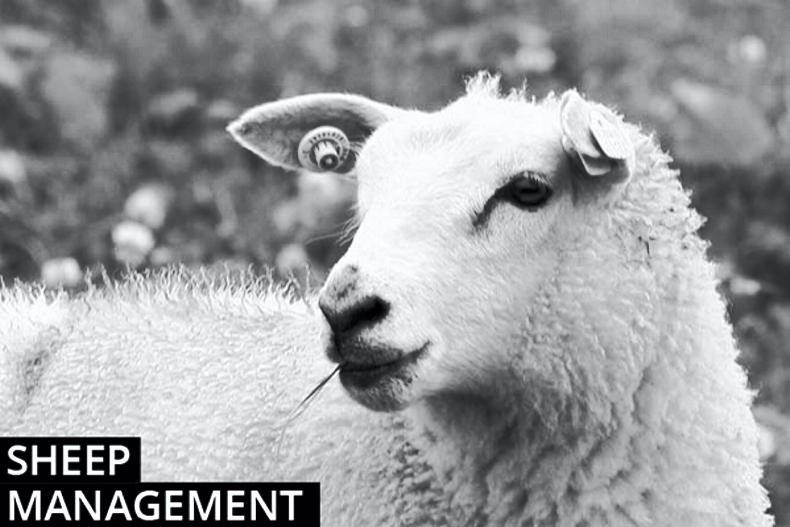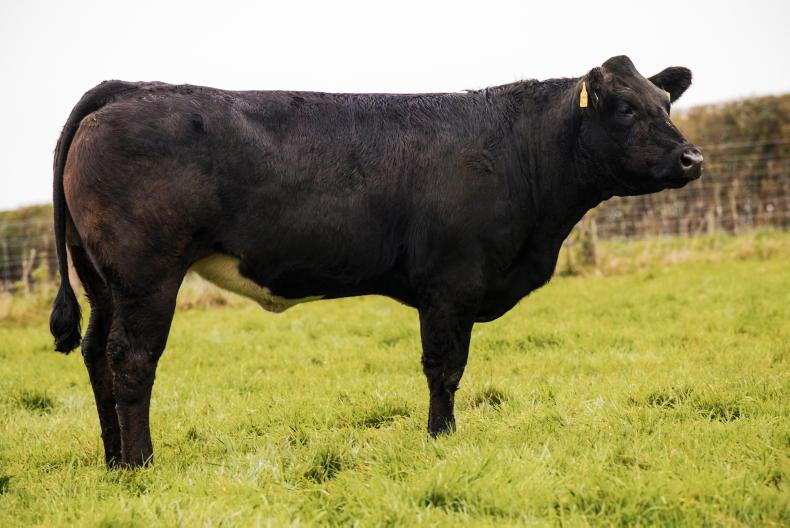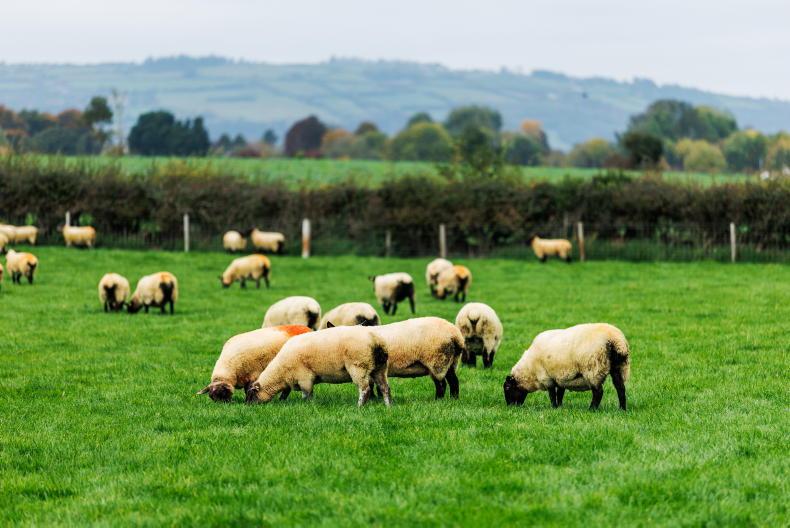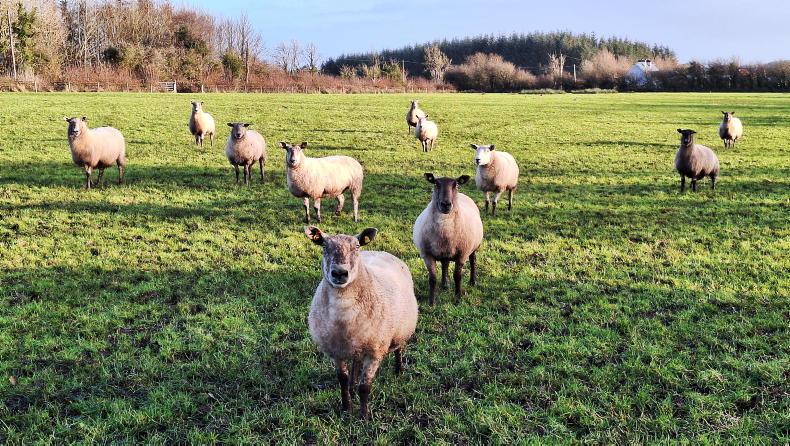Many mid-season lambing flocks have one cycle of breeding over, while those lambing towards the end of February are into their third and final cycle. It is important to maintain ewes on a high plane of nutrition for the first month of pregnancy to ensure optimum development of the embryo(s) and attachment to the wall of the uterus.
Achieving this target will differ hugely between farms, as some have surplus grass while others have only two to three weeks of grass ahead of stock. In the latter situation, it is important to take steps to stretch out grass supplies, with priority given to ewes. This may mean housing cattle and reducing demand from grazing lambs. Options available to achieve this are housing lambs for indoor finishing or testing the store market. The potential return from both avenues have reduced in recent weeks, with falling factory quotes squeezing prices.
Where lambs are being housed, it is important to consider the diet offered. Unless top-quality silage is available (75DMD), it will be more economical to finish lambs on ad-lib concentrates than a 50:50 silage/concentrate mix. The best margin will be achieved where lambs are within close range of slaughtering and can be finished after a period of 40 to 50 days’ feeding.
Once accustomed to meal feeding, lambs will gain in the region of 200g to 300g per day, with 220g a good ballpark for hill lambs and 250g to 280g a good ballpark for crossbred and lowland lambs. The economics of feeding lighter lambs for long periods are more unfavourable, and in this situation it may be best to consider the store trade if grass supplies are particularly tight. While on the topic, Teagasc is holding an open day for finishing store lambs at Mellows Campus, Athenry, on 15 November.
Liver fluke
The focus during breeding is to keep stress and handling to a minimum. Vets are strongly advising farmers to be wary of the threat of liver fluke.
Where flocks have traditionally had problems with fluke and have not yet treated animals this autumn, it is worth weighing up if ewes need a dose, even if this comes with the consequence of disrupting breeding.
Remember to select a product that treats at least immature flock.
Read more
Ten top tips for winter flock management
Control of fluke in beef cattle and sheep
Sheep management: grazing heavy covers
Many mid-season lambing flocks have one cycle of breeding over, while those lambing towards the end of February are into their third and final cycle. It is important to maintain ewes on a high plane of nutrition for the first month of pregnancy to ensure optimum development of the embryo(s) and attachment to the wall of the uterus.
Achieving this target will differ hugely between farms, as some have surplus grass while others have only two to three weeks of grass ahead of stock. In the latter situation, it is important to take steps to stretch out grass supplies, with priority given to ewes. This may mean housing cattle and reducing demand from grazing lambs. Options available to achieve this are housing lambs for indoor finishing or testing the store market. The potential return from both avenues have reduced in recent weeks, with falling factory quotes squeezing prices.
Where lambs are being housed, it is important to consider the diet offered. Unless top-quality silage is available (75DMD), it will be more economical to finish lambs on ad-lib concentrates than a 50:50 silage/concentrate mix. The best margin will be achieved where lambs are within close range of slaughtering and can be finished after a period of 40 to 50 days’ feeding.
Once accustomed to meal feeding, lambs will gain in the region of 200g to 300g per day, with 220g a good ballpark for hill lambs and 250g to 280g a good ballpark for crossbred and lowland lambs. The economics of feeding lighter lambs for long periods are more unfavourable, and in this situation it may be best to consider the store trade if grass supplies are particularly tight. While on the topic, Teagasc is holding an open day for finishing store lambs at Mellows Campus, Athenry, on 15 November.
Liver fluke
The focus during breeding is to keep stress and handling to a minimum. Vets are strongly advising farmers to be wary of the threat of liver fluke.
Where flocks have traditionally had problems with fluke and have not yet treated animals this autumn, it is worth weighing up if ewes need a dose, even if this comes with the consequence of disrupting breeding.
Remember to select a product that treats at least immature flock.
Read more
Ten top tips for winter flock management
Control of fluke in beef cattle and sheep
Sheep management: grazing heavy covers










SHARING OPTIONS